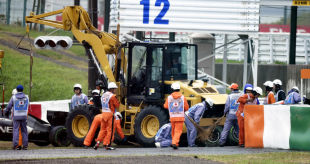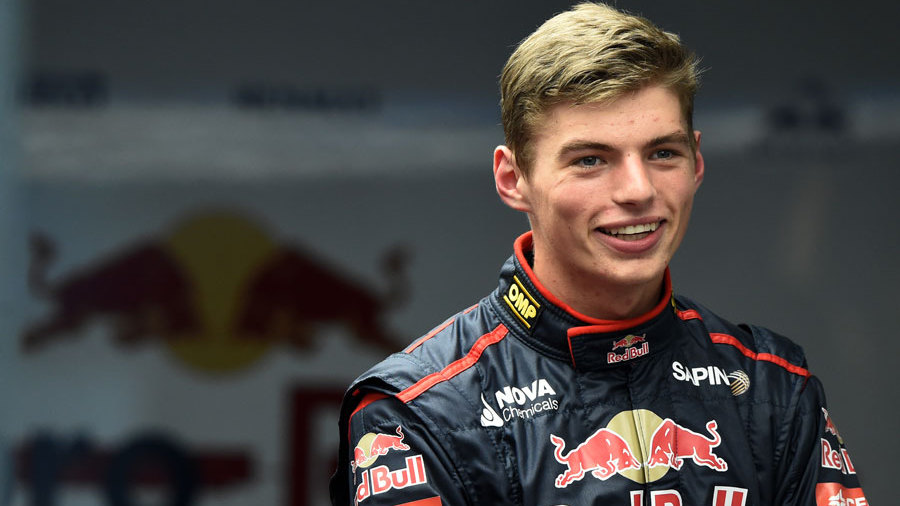- Rule changes
Regulation changes in 2015

As ever in Formula One, a new season brings with it a host of new regulations. ESPN rounds up all the changes which will have an impact on the 2015 season.
Engines
The biggest debate for much of 2014 and the start of the new year has been about engines. A loophole in the FIA's regulations means Mercedes, Renault and Ferrari's engine development will no longer be constricted to the February 28 homologation deadline. Instead, they can spread development over the course of a season, albeit restricted to 32 tokens on certain parts of the engine. Honda returns to the sport with McLaren but is subject to slightly different rules as 2015 is its first year with V6 turbo engines. Though initially it was to be held to a homologation deadline, the FIA has given Honda a concession and it will start the season with the average amount of tokens unused by its rivals at that stage. Another key change is that all four manufacturers will be restricted to just four power units for the entire season, rather than the five they were allowed in 2014.
Cars

The ugly noses of 2014 have been confined to the history books, with concern over both aesthetics and safety leading to a change for this year. The new noses will be much lower and tapered, like they were in the mid-1990s. The regulations now have less room for interpretation than they did last year, meaning it is unlikely we will see as much variation in design. The minimum weight of the car (without fuel) has been increased from 691kg and 702kg so taller drivers are not penalised and there is less emphasis on drivers losing weight, with Adrian Sutil admitting last year he went two days without food in attempt to drop the pounds.
Safety car
Jules Bianchi's horrific crash in Japan last year brought the issue of safety back to the surface in Formula One, especially as it occurred while yellow flags were being waved. This year sees the introduction of the Virtual Safety Car (VSC) as a result for situations which do not warrant a safety car. Drivers will be required to stick to a delta time on their steering wheels, with a penalty for anyone who fails to do so. Following a safety car period the race will resume under a traditional rolling start after the standing restarts rule mooted for 2015 was dropped. The safety car will also return to the pits as soon as the last lapped car has passed the leader in order to restart the race as quickly as possible.
Testing
All of the winter tests will be in Europe this year, in Jerez (February 1-4) and Barcelona (February 19-22 and February 26-March 1). In-season tests have been halved, with two two-day meets scheduled after Spain and Austria. At least two of the four in-season test days must be allocated to young drivers, defined as someone who has not competed at two races or less. Teams can run their 2015 cars at two demonstration events during the year.

Penalties
At the end of 2014 several drivers suffered severe grid penalties for engine changes, some of which carried over multiple races. This will no longer be the case in 2015. A grid drop will still apply for changing certain components after drivers have exceeded their initial allotment, but any unused penalty will be converted into a time penalty for the race rather than carrying over to other events. This will also apply in the case of changing an entire power unit, previously resulting in a pit-lane start, with a cumulative penalty for each component being installed and, if necessary, a time penalty for the race.
Pit stop penalties have been tweaked, with a ten-second penalty being added for more serious infringements for drivers to take at their next pit stop or added to their time at the finish. An unsafe release will trigger a ten-second stop-and-go penalty, while a car must start from the pit lane if any team member or equipment remains on the grid after the 15-second signal sounds before the formation lap.
Young drivers
One of the more intriguing change to the regulations, announced in December, was the change to super licence rules. As a reaction to Max Verstappen's early elevation to F1 drivers will need to be 18 or over and have at least 40 'points' to their names from 2016 onwards. These points are obtained in other categories, which have been controversially weighted in favour of FIA events and at the expense of Formula Renault 3.5, a traditional stepping stone towards F1. Half of the current grid, including Fernando Alonso, Sebastian Vettel and Kimi Raikkonen, would not have qualified for their debut F1 seasons under the amended regulations.

Other changes
- The latest date the sporting and technical regulations can be changed without unanimous agreement has been brought forward to March 1, having previously been June 30.
- Instead of doing so at the start of FP3, a car will only considered to be in parc ferme conditions from the beginning of qualifying.
- Teams must choose their gear ratios at the beginning of the season and then stick with them for the rest of the season.
- A proposed ban on tyre blankets has been rescinded, though the issue will remain on the agenda for future discussions.
- The derided double points format has been ditched for the Abu Dhabi finale, meaning in all 20 races the top ten will be awarded points as follows: 25-18-15-12-10-8-6-4-2-1.

